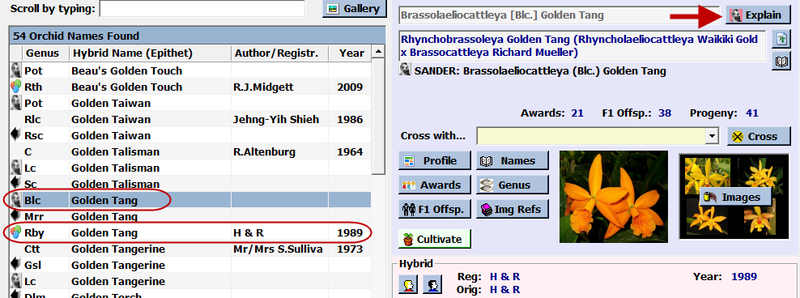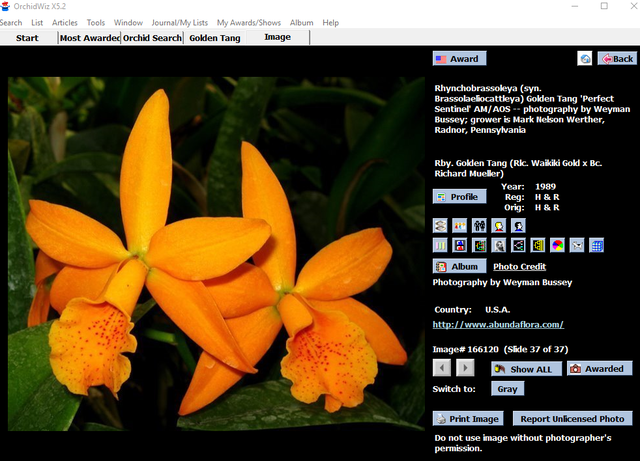In this tutorial, I would like to introduce you a great search feature: The "Breeding Group" or simply "Group". I use this criteria all the time and almost never set Genus, or Genus Abbreviation ("Abbr."). If you are searching for an orchid that is either in the Cattleya Alliance or the Oncidium Alliance, entering the genus is almost useless because so many orchids have a mislabeled genus. There are growers out there that will use the genus abbreviations C, Lc, Blc, Sc, Rsc, Rlc and others almost interchangeably, carelessly, and with complete disregard for accuracy. This is where the breeding group comes handy:

For example, there is a beautiful orchid in the Cattleya alliance named "Golden Tang". It is a yellow to orange color, a result of the cross of Waikiki Gold with Richard Mueller. What is a little unusual about its genetic makeup is that it has both Brassavola nodosa and Rhyncolaelia digbyana in it's background (digbyana changed genera from Brassavola to Rhyncolaelia but nodosa did not). This makes the name of the genus almost impossible to guess at. Rather than trying to guess at it, search for all Laeliinae with "golden t" in the name:

The result is still quite large, however we find our orchid in the first list that comes up:

This orchid was for a long time known as "Blc. Golden Tang". Then, it was briefly under the genus "Marriottara [Mrr] (B x C x Rl x S)" when many cattleyas became sophronitis, and finally it switched to the current genus "Rhynchobrassolaelia [Rby] (B x C x Rl)".
If you would like to know why it changed genera from Blc to Bby, click the button "Explain":

Denoted in red are the species in the background of Rby. Golden Tang which changed genera. The resulting genus is a combination of the changes.
To read other articles on OrchidWiz, click the button  below the title at the top of this page.
below the title at the top of this page.
If you like this article, please make sure to click the button "Like?" at the top of this page, below the author's name. Also, let us know what you think by posting your questions or comments below.
